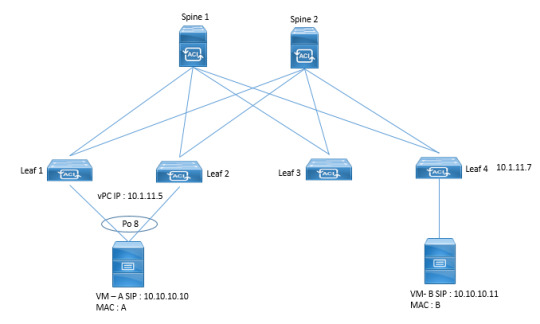#Microarchitecture
Explore tagged Tumblr posts
Text

Compact Data Storage (CDS)
#glitch#webcore#glitchart#internetcore#postglitch#processing#databending#abstract#abstract art#generative#generative art#genart#artists on tumblr#experimental art#glitch aesthetic#digital art#aesthetic#glitch art#tech#cybercore#techcore#scifi#cyberpunk#cyberpunk aesthetic#cybernetics#futuristic#microarchitecture#newmedia#multimedia#contemporary art
288 notes
·
View notes
Text



M_ps_007
#architecture#minimalist#geometry#concret#moda#brutalism#socialistachitecture#streetart#Streetarch#3dprintinglife#urbanart#sculpture#microarchitecture#architecturalform#metabolism
4 notes
·
View notes
Text
SciTech Chronicles. . . . . . . . .April 17th, 2025
#Donaldjohanson#SwRI#“12.5 light minutes away”#“observation sequence”#raindrops#“plug flow”#10%#“electrically conductive polymer”#“Neurospora crassa”#“Sporosarcina pasteurii”#mineralized#microarchitecture#Hyperadaptor#nickel-based#temperature-insensitive#“sudden or extreme temperature changes”#“high-bed cultivation”#Lidar#disease#pruning
0 notes
Text
Creating a new processor microarchitecture.

Support with your donation an important technology project that will open new opportunities for the entire microprocessor development and manufacturing industry.
Friends, I salute you all.
I am creating a fundamentally new processor microarchitecture and new units of information measurement with a team of like-minded people.
The microarchitecture I am creating will be much faster than the ones we have now. The new microarchitecture will speed up the work of all components of the processor, as well as other devices with which it interacts. New modules and fundamentally new algorithms of operation will be introduced into the work of the processor components.
Why is it important to support with a donation my project to create a new processor microarchitecture? The processors produced today have reached their technological limit in terms of reducing the size of transistors.
Over the past decades, processor performance gains have been largely achieved by reducing the transistor size and, in parallel, increasing the number of transistors on the chip.
Now, further reduction of transistor size is becoming more and more technologically challenging. One way out of this situation is to create a new microprocessor architecture that will use new algorithms. The new microprocessor architecture will make it possible to increase the performance of processors without increasing the number of transistors on the chip or reducing the size of the transistors themselves.
What has been done so far, brief description:
1. Assembled a team of developers with whom I will develop a new processor microarchitecture.
2. Technical specifications of the first samples of the new processor microarchitecture have been approved.
3. A step-by-step scheme of development of the new microarchitecture of the processor is created.
What else needs to be done, a brief description:
1. Acquire lab equipment to be able to design and build a new processor microarchitecture.
2. Purchase lab equipment to test individual compute modules on the new microarchitecture.
3. Develop individual computational modules of the new processor microarchitecture.
4. Test the created computational modules for performance and compliance with the planned specifications.
5. Create fundamentally new operating algorithms for computing modules and blocks.
6. Assemble a new microprocessor architecture from the developed computational modules.
7. Test the new processor microarchitecture against the planned performance.
8. Develop a scheme of interaction of the processor on the new architecture with peripheral devices.
9. Test the interaction of the processor on the new architecture with peripheral devices.
... And much more. The amount of work is huge.
Friends even your minimal donation will help us a lot.
You can help us with your donation through our fundraising platform (link to platform website): https://www.pledge.to/creating-a-new-processor-microarchitecture
or send funds directly to our account:
You can send a donation to the following details:
Bitcoin crypto wallet address:
14bBNxQ8UFtj1WY7QrrUdBwkPYFsvMt2Pw
Bitcoin cash crypto wallet address:
qqn47tcp5xytuj3sp0tkqa9xvdrh5u9lvvhvnsff0v
Ethereum crypto wallet address:
0x653C53216d76a58a3D180519891366D2e61f9985
Polygon (MATIC) crypto wallet address:
0x653C53216d76a58a3D180519891366D2e61f9985
Payment system Payer: Account number: P1108734121
Payment system Webmoney wallet numbers:
US dollar: Z268481228605
Euro: E294954079686
#Donation#donate#donation links#fundraiser#donations#processor#microarchitecture#Creating#technology#computing#research#futurism#microprocessor#microprocessors#project
0 notes
Text
The Intel Core i9-14901KE for Content Creators and Gamers

Intel Raptor Lake processors
Intel stealthily launched the “14001” series of 14th-Gen Raptor Lake Refresh processors. The chips lack Intel’s current microarchitectures‘ Efficiency cores (E-cores) and have just Performance cores (P-cores). This new CPU series is aimed for embedded applications and includes Intel’s first overclockable embedded processor, the Core i9-14901KE.
Intel has stealthily introduced 14th-Gen Raptor Lake Refresh processors ahead of its Arrow Lake-S desktop CPUs. The unusual 14001 series chips have just Performance cores (P-cores) and no Efficiency cores (E-cores) like Intel’s latest architectures. These CPUs, designed for embedded applications, have an intriguing overclockable top model.
The downside is that these CPUs are embedded (soldered-in). They are not user-replaceable and must be purchased with an industrial motherboard. This makes them unattainable for most fans and consumers.
The new E-core-free portfolio from Intel includes three Core i9 models, two Core i7 models, and four Core i5 models. The flagship Core i9-14901KE appears to be an overclockable K-series chip, a rarity for embedded Intel processors.
This series is Intel’s first E-core-free series since the 11th generation, departing from their hybrid architecture plan. Intel can reuse Raptor Lake dies with damaged E-cores but otherwise working components.
New processors have benefits. They eliminate hybrid architecture difficulties like workload scheduling between core types. Many applications don’t need E-cores and work best with six to eight physical cores of any type.
Each Core i9 model has eight Raptor Cove P-cores, 16 threads, and 36MB L3 cache. They differ mostly in clock speeds and power targets. The top-tier Core i9-14901KE has a 5.8GHz turbo clock, 3.8GHz base clock, and 125W long-term TDP. The Core i9-14901E decreases long-term power usage to 65W with a minor performance trade-off, while the 45W variant is the most power-efficient.
Like the i9, the Core i7 has eight cores and 16 threads, but lower speeds and smaller L3 caches. Core i7-14701E and TE run at 65W and 45W, respectively. The worst Core i5 versions have six cores, 12 threads, and 24MB L3 cache. The Core i5-14501 and Core i5-14401 series match their desktop equivalents. Boost clocks and integrated graphics performance differ most.
Intel UHD 770 Graphics with 32 execution units are on all versions except the Core i5-14501. The Core i5-14501 series uses 24 execution units for UHD 730 Graphics.
Intel’s surprising revelation shows its capacity to innovate inside product lines, potentially opening new markets for specialised computer solutions.
The i9-11900K is a good CPU for Intel E-core sceptics. Amazon.com currently sells it for $260.
Intel’s most recent portfolio of 14th-Gen CPUs represents another step forward in chip technology. The overclockable Core i9-14901KE is one of the best of them, providing both pros and hobbyists with great performance and versatility. This post explores the capabilities, features, and potential of the Core i9-14901KE, emphasising the reasons it represents a noteworthy upgrade to Intel’s CPU lineup.
Introducing the Core i9-14901KE
Among Intel’s latest E-core-less CPUs, the Core i9-14901KE delivers optimal performance for demanding applications. Its ability to overclock, which boosts performance, makes it stand out.
Design and Execution
The high-performance Core i9-14901KE uses Intel’s 14nm production process to skip E-cores and use P-cores. Perfect for 3D rendering, video editing, and gaming, this architecture prioritises processing speed and power.
Important details:
Speed of Base Clock: 3.7 GHz
Peak Turbo-Boost Speed: 5.3 GHz
Number of Cores: 10 P-cores
There are 20 threads.
20 MB of L3 cache
Thermal Design Power (TDP): 125 watts
Core i9-14901KE Potential Overclocking
One of the most attractive aspects of the Core i9-14901KE is that it can be overclocked. By adjusting the CPU’s parameters, enthusiasts can unlock more performance by reaching faster clock rates. With the help of its Extreme Tuning Utility (XTU), Intel offers strong overclocking support. Users may tweak voltages, clock rates, and other settings to achieve the ideal compromise between performance and stability.
Cooling Factors
To handle the higher heat output from overclocking the Core i9-14901KE, efficient cooling solutions are needed. It is advised to use specialised water cooling loops or high-quality AIO (All-in-One) liquid coolers to maintain ideal temperatures and guarantee dependable operation during demanding workloads.
E-core-less Design: An Innovative Approach
The Core i9-14901KE‘s decision to forgo E-cores is a reflection of Intel’s strategy emphasis on optimising both single and multi-threaded performance. This CPU provides improved performance for programmes that benefit from higher clock speeds and more core counts by allocating all resources to P-cores.
Benefits of Architecture Without an E-Core:
Better Single-Core Performance
P-cores perform better for single-threaded applications since they are designed for high clock speeds and minimal latency.
Improved Multi-Core Efficiency
Since every core is high-performance, multi-threaded programmes may take advantage of the entire processing capacity without having to deal with the mixed workload that E-cores handle.
Simplified Power Management
Power delivery and thermal management are simplified in the absence of E-cores, which may result in more reliable performance under load.
Comparing and Observing Actual Performance
The Core i9-14901KE has shown considerable performance gains over its predecessors, according to early benchmarks. The CPU shows excellent single-core and multi-core results on artificial benchmarks, indicating its potential in practical applications. Benchmarks for gaming demonstrate notable gains in responsiveness and frame rates, especially in CPU-bound a game.
Productivity and Content Creation:
Professionals and content makers should use the Core i9-14901KE for software development, 3D rendering, and video editing. It reduces rendering times and boosts productivity in demanding processes due to its high clock rates and core count.
Harmony and Prospective-Looking
PCIe 5.0, DDR5 memory , and enhanced networking are supported by Intel’s Z790 chipset in the Core i9-14901KE. Build a cutting-edge system using the newest technology to future-proof your investment.
Upgrade Route and Duration
Users may anticipate continuing compatibility with new technologies and updates because to Intel’s commitment to maintaining the 14th-Gen platform. Because of this, the Core i9-14901KE is a wise option for anyone wishing to construct a high-performance system that will last for many years.
Conclusion: A Novel Standard in High-Efficiency Computing
A new benchmark in high-performance computing is set by the overclockable Core i9-14901KE, which provides unmatched power and versatility. Its E-core-less design and strong overclocking potential set it apart as a top option for professionals, gamers, and enthusiasts looking for extreme performance. With its dramatic advancement in CPU technology, the Core i9-14901KE promises outstanding performance for a variety of demanding workloads, demonstrating Intel’s continued innovation.
Read more on govindhtech.com
#IntelCore#IntelCorei914901KE#microarchitecture#hybridarchitecture#CPU#Corei5models#DDR5memory#news#technews#technologynews#technologytrends#technology#govindhtech
0 notes
Text


Ready to delve into the world of Layer 2 (L2) Datapath Scenarios and understand how they shape network performance and reliability? DC Lessons offers an engaging course designed for IT professionals, network engineers, and anyone eager to optimize their network infrastructure. https://www.dclessons.com/l2-datapath-scenerios
#DCLessons#DataPath#Learning2Datapath#Scenarios#ComputerArchitecture#DigitalCircuits#LogicDesign#InstructionSetArchitecture#Microarchitecture#ComputerScienceEducation#TechLearning
0 notes
Link
These are specialized solutions for network infrastructure In just a few weeks, Intel will release Meteor Lake processors, which, among other things, will be the company’s first-born, produced using the Intel 4 technical process. However, another company beat Intel itself and was the first to present its chips created using the same technical process. They were Ericsson RAN Compute. [caption id="attachment_84939" align="aligncenter" width="780"] Intel 4 process[/caption] Ericsson announced new RAN Compute These, of course, are not classic CPUs, but specialized solutions for network infrastructure, but the very fact that Ericsson has surpassed Intel is quite interesting. However, for Intel’s IDM 2.0 strategy, within which the processor giant also wants to become a semiconductor manufacturing giant, this is rather a plus. It doesn’t make much sense to say anything about RAN Compute chips from a technical point of view, but it’s still worth noting that, according to the company itself, the high-performance RAN Processor 6672 and Radio Processor 6372 processors provide four times greater performance compared to the previous generation and can support up to six 4G and 5G modes in one device. In addition, the new chips consume 30–60% less energy, which is likely due in large part to the new technical process.
#Advanced_manufacturing#Chip_Manufacturing#CPU_Technology#Intel#Intel_CPU#Intel_processor_lineup.#Intel_processors#manufacturing_process#microarchitecture#Processor_fabrication#semiconductor#semiconductor_industry#semiconductor_technology#Silicon_Technology
0 notes
Text

The people love my insane and ill-informed opinions on microarchitectures.
14 notes
·
View notes
Text
it’s just dawned on me that my exam is NEXT WEEK
ON TUESDAY
NOT EVEN A FULL WEEK AWAY
A COUPLE OF DAYS. OH MY GOD????
chat i’m scared. chat im cooked. chat what is a microarchitecture. chat i still dont know how audio files work. chat. c
5 notes
·
View notes
Note
The ARM microarchitecture (1985)
ARM based processors, it's what powers your phone and most of your beloved mobile devices.
Lower costs, power consumption and heat generation makes them perfect for all types of mobile devices, from a smartwatch to a laptop. Though they are also used on desktop computers, servers and even supercomputers.


Thing Ford Missed #277: The ARM Microarchitecture
18 notes
·
View notes
Text
if you date an autistic nb please understand that your primary competitors are color spaces and computer microarchitecture
2 notes
·
View notes
Text

DAEMON Database Server
#glitch#webcore#glitchart#internetcore#postglitch#processing#databending#abstract#abstract art#generative#generative art#genart#artists on tumblr#experimental art#glitch aesthetic#digital art#aesthetic#glitch art#tech#cybercore#techcore#scifi#cyberpunk#cyberpunk aesthetic#cybernetics#futuristic#microarchitecture#newmedia#multimedia#contemporary art
149 notes
·
View notes
Text



M_ps_006
#architecture#minimalist#geometry#concret#moda#brutalism#socialistachitecture#streetart#Streetarch#3dprintinglife#urbanart#sculpture#microarchitecture#architecturalform#metabolism
3 notes
·
View notes
Text
realising with horror that in the cool chips post I somehow called it P5 microarchitecture instead of P6 microarchitecture and it's just been sitting there for months
9 notes
·
View notes
Text
#Donation#donate#fundraiser#technology#computing#microprocessor#microarchitecture#development#project
1 note
·
View note
Text
Computing with Time: Microarchitectural Weird Machines
https://cacm.acm.org/research-highlights/computing-with-time-microarchitectural-weird-machines/
3 notes
·
View notes